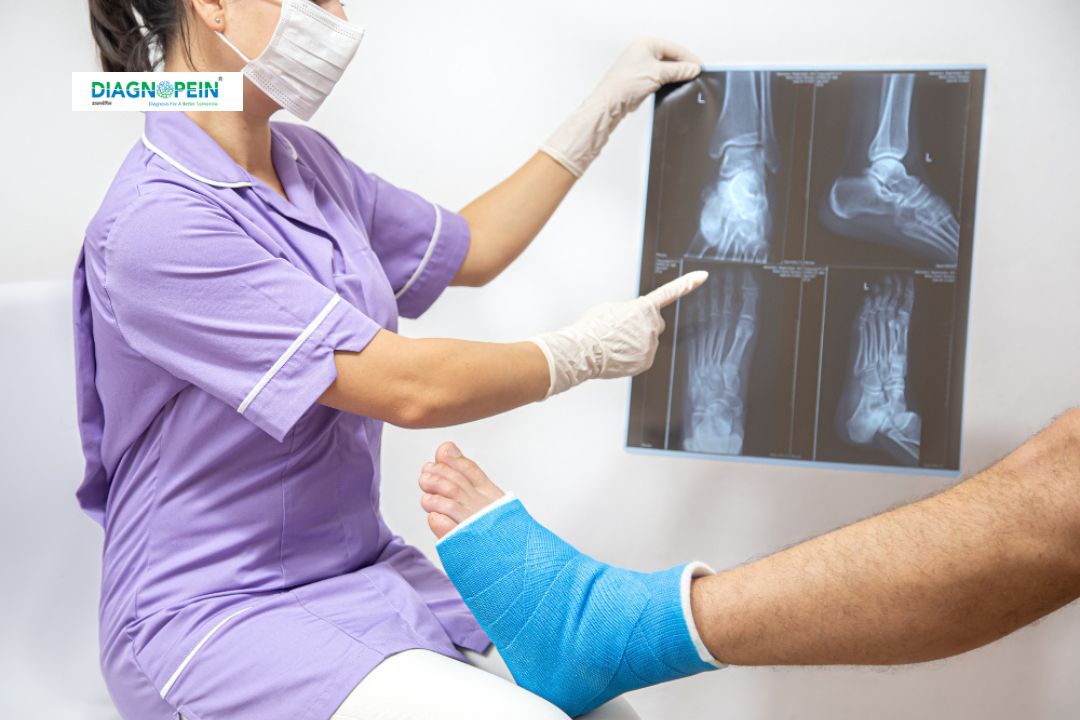MRI Knee Joint with Sialography – Advanced Imaging for Accurate Knee Diagnosis
Magnetic Resonance Imaging (MRI) of the knee joint is one of the most effective diagnostic tools to visualize bones, ligaments, tendons, and cartilage in detail. At Diagnopain, our MRI Knee Joint with Sialography provides a high-resolution, non-invasive evaluation that helps identify complex injuries, inflammations, and structural abnormalities. This advanced imaging technique is beneficial for early and accurate detection, guiding precise treatment planning for knee disorders.
Importance and Benefits of MRI Knee Joint with Sialography
Why This Scan Matters
The MRI Knee Joint with Sialography is an essential diagnostic procedure for patients experiencing unexplained knee pain or injury. It precisely maps the internal structures and fluid patterns, ensuring doctors can determine the exact cause of discomfort.
Traditional X-rays or CT scans may not detect soft tissue injuries, whereas MRI knee scans clearly display ligaments, cartilage, muscles, and joint fluids.
Key Benefits
-
Detects hidden or early-stage ligament and meniscus damage
-
Evaluates cartilage wear, tears, and joint effusions
-
Assesses both the MRI left knee and MRI right knee joint in detail
-
Helps monitor treatment progress or postoperative healing
-
Non-invasive, painless, and does not use ionizing radiation
This advanced imaging helps orthopedic specialists, sports medicine experts, and physiotherapists make informed decisions about surgical or conservative management. Accurate diagnosis through MRI knee joint with sialography can significantly shorten recovery time and improve patient outcomes.
How the MRI Knee Joint Test is Performed
At Diagnopain, we perform MRI knee left or MRI right knee joint scans using modern MRI technology for superior image clarity.
Step-by-Step Process:
-
Preparation: The patient changes into a hospital gown and removes all metal objects.
-
Positioning: The affected knee (left or right) is placed in a comfortable coil designed to capture detailed images from multiple angles.
-
Imaging: During the scan, the MRI machine generates cross-sectional images while the patient remains still.
-
Sialography Integration: In specific cases, a contrast agent is gently introduced to enhance joint visualization, improving diagnostic accuracy.
-
Completion: The test takes about 30–45 minutes, after which patients can resume normal activities unless contrast was used.
Throughout the process, our trained radiologists monitor imaging sequences to ensure precision and patient comfort.
Technical Parameters and Imaging Details
Our MRI Knee protocols are optimized for diagnostic clarity and patient safety. Typical parameters used in MRI knee left or MRI right knee joint scans include:
-
Slice thickness: 3–4 mm for high anatomical detail
-
Sequences: T1, T2, PD-weighted, and STIR (with optional contrast enhancement)
-
Planes: Axial, coronal, and sagittal sections
-
Field strength: 1.5 Tesla or 3 Tesla systems for sharper imaging
-
Dynamic Sialography: Evaluates joint fluid and movement patterns
These parameters help obtain clear images for accurate interpretation of ligament tears, cartilage degeneration, meniscal injuries, bone bruises, and fluid accumulations.
Our specialists ensure each MRI knee joint study delivers precise diagnostic information for both sports-related injuries and chronic knee pain management.
When to Consider MRI Knee Joint with Sialography
Your doctor may recommend an MRI knee left or MRI right knee joint if you experience:
-
Persistent or severe knee pain
-
Swelling, redness, or stiffness around the joint
-
Post-injury instability or clicking sounds
-
Suspected ligament, cartilage, or meniscus damage
-
Following surgery to evaluate healing and tissue repair
Identifying joint pathology early helps prevent long-term complications. At Diagnopain, every MRI knee joint scan is reviewed by expert radiologists to ensure accurate and timely reporting.








